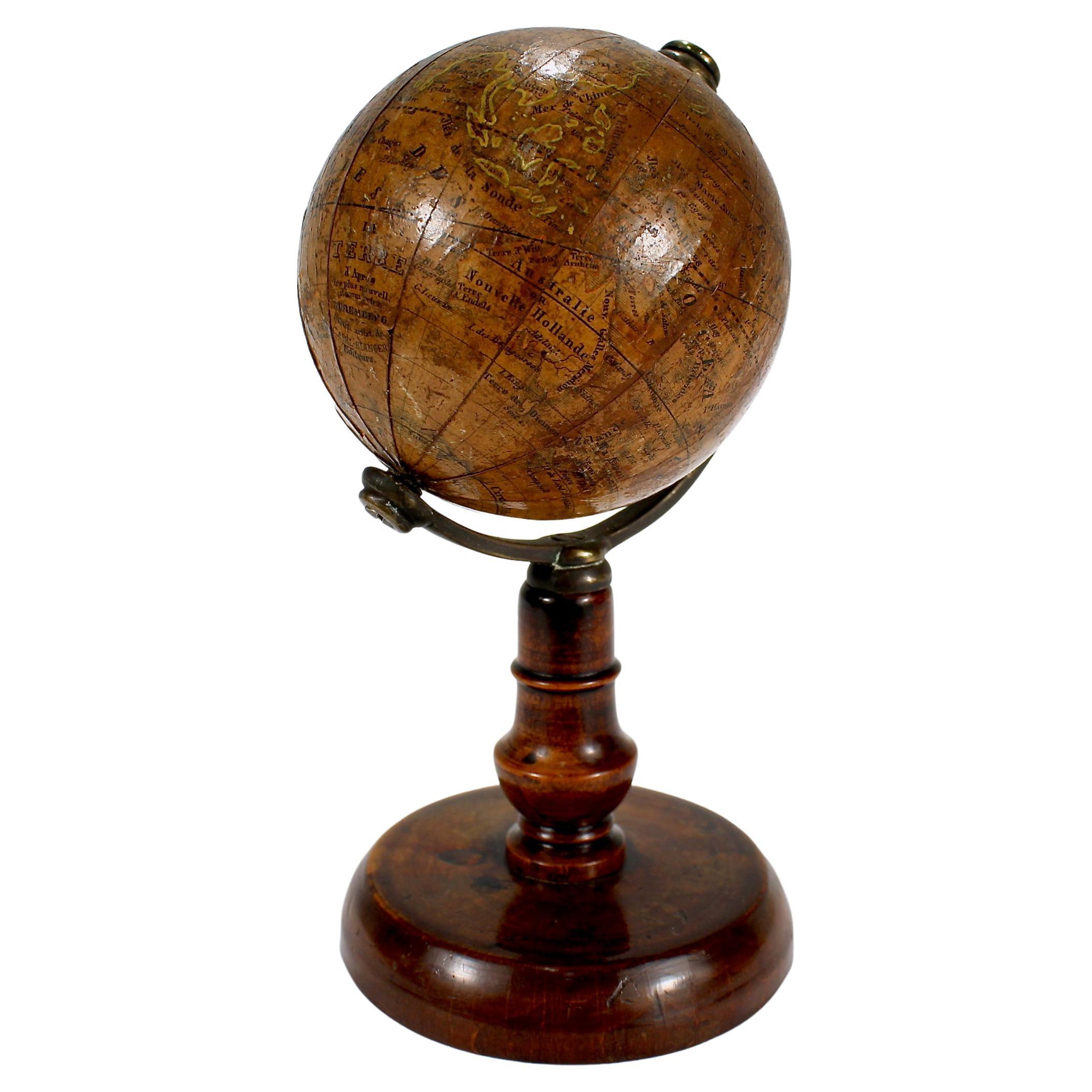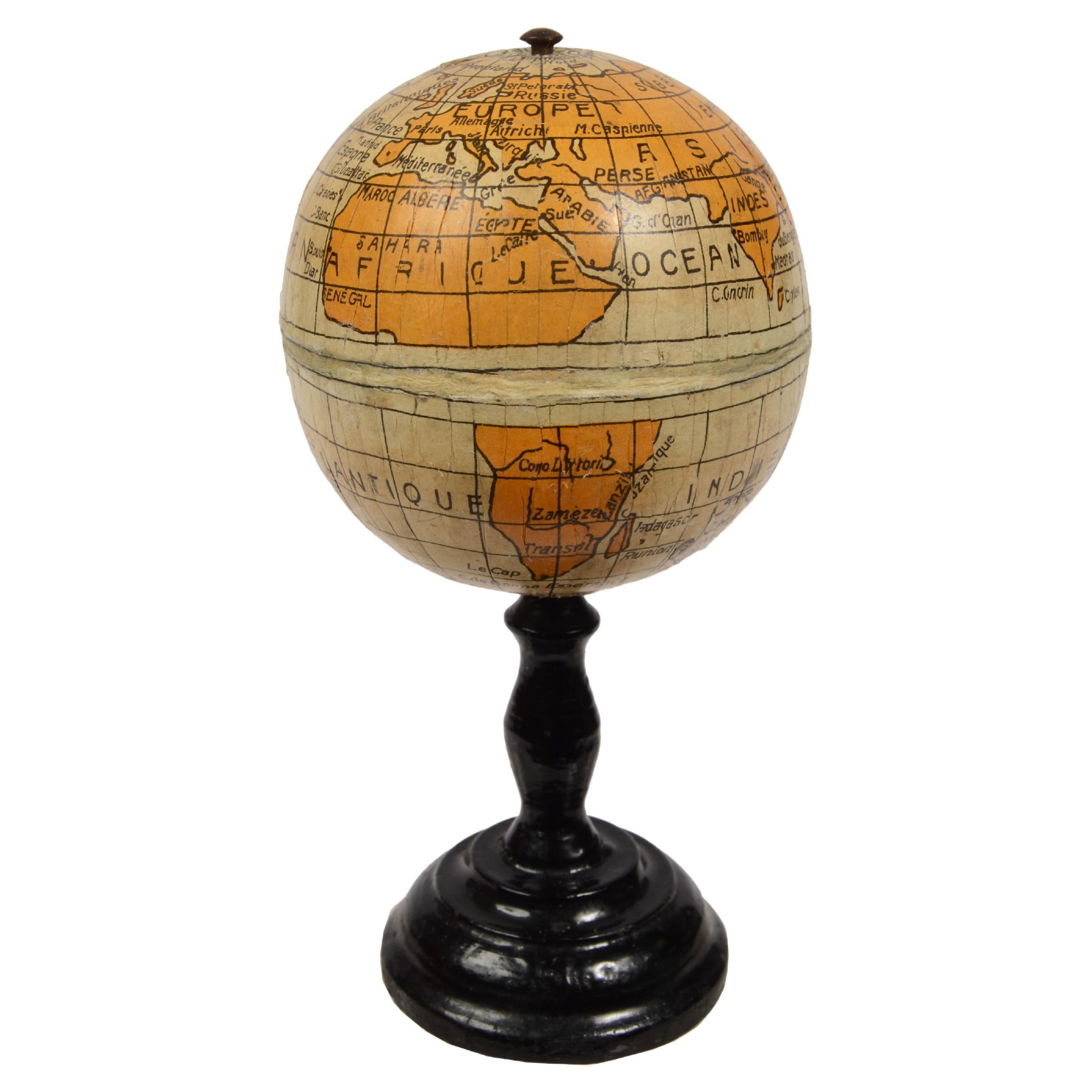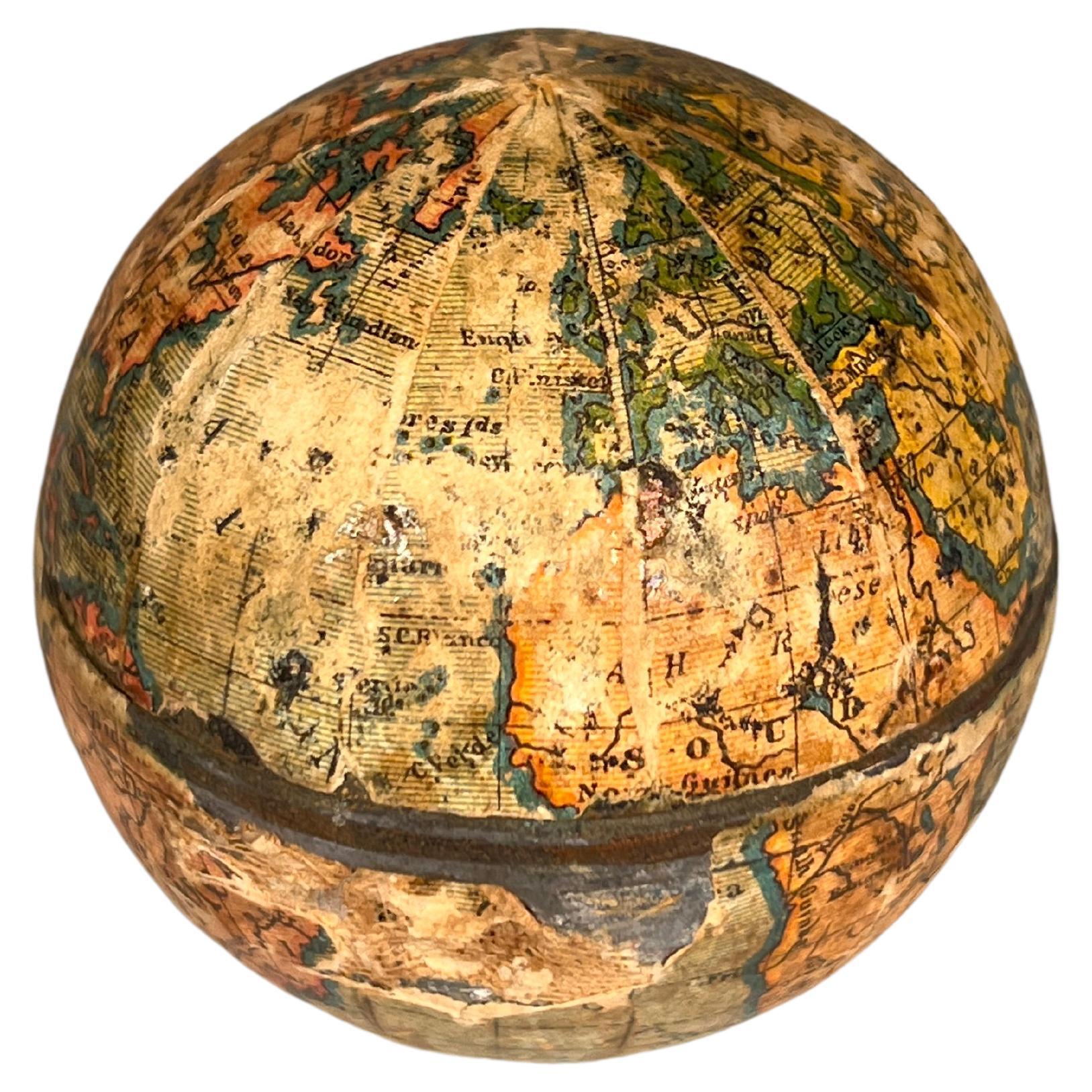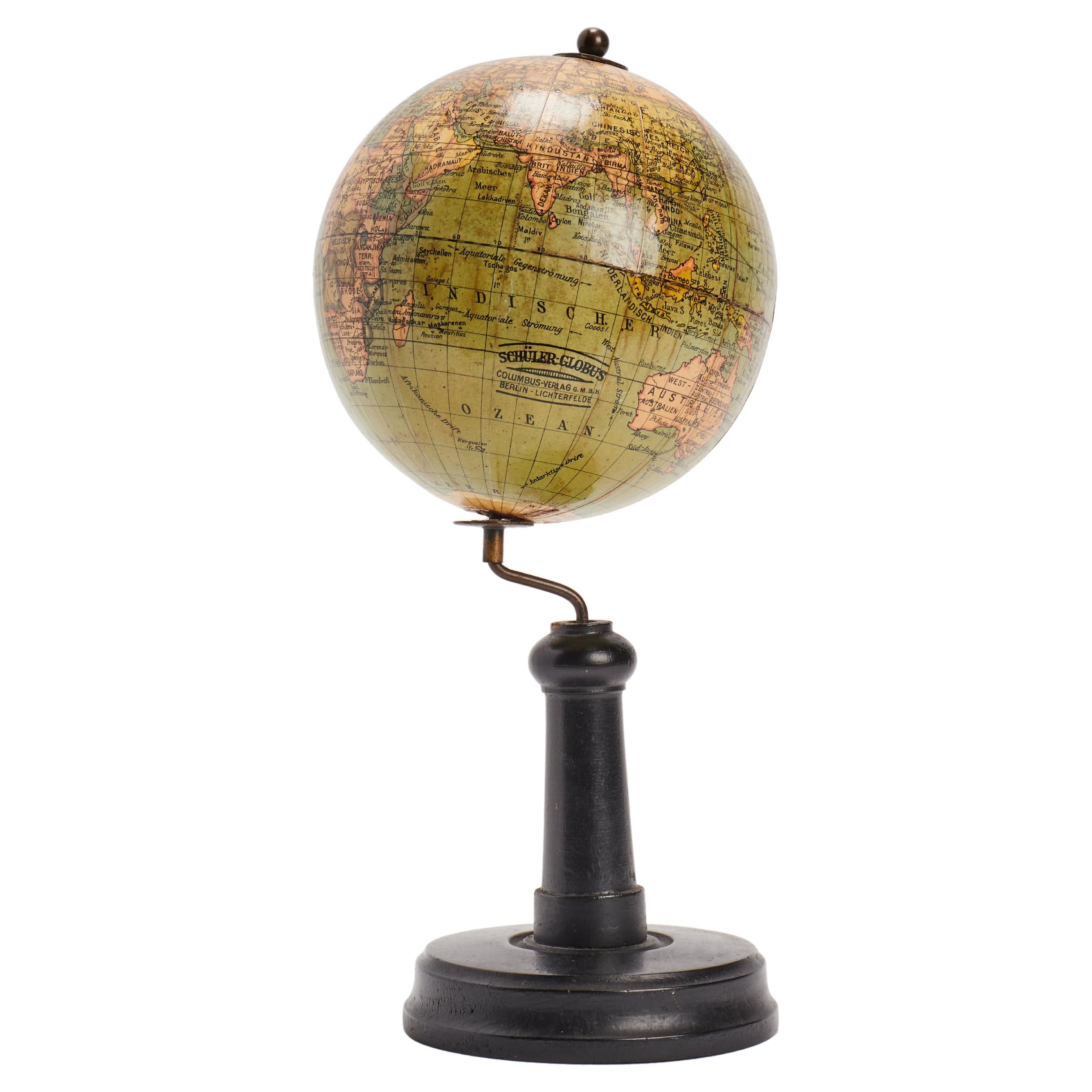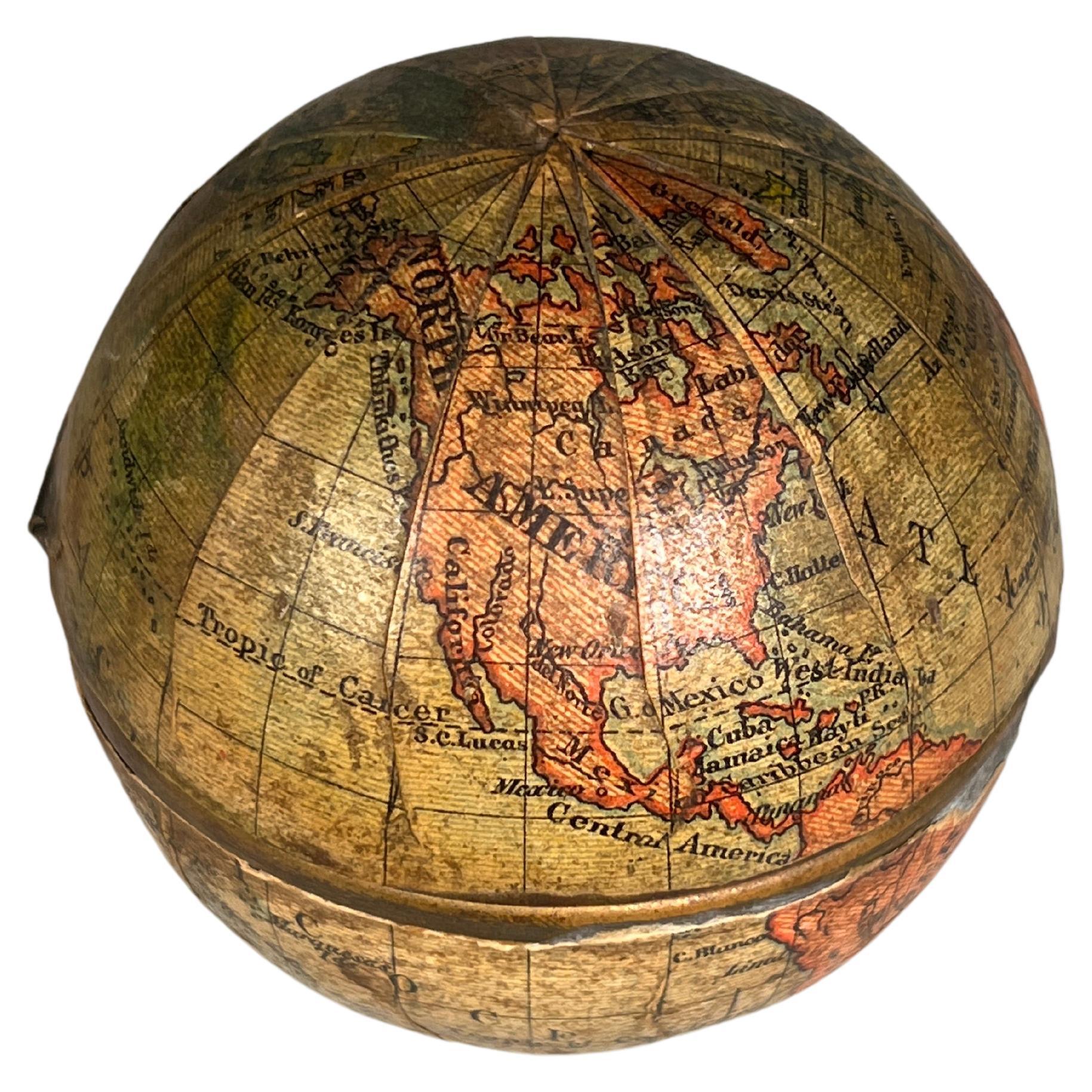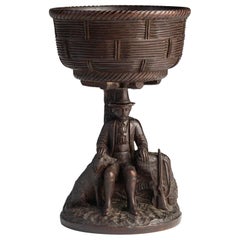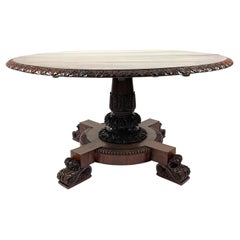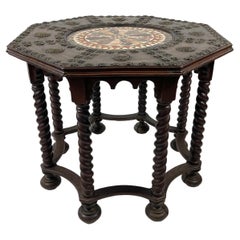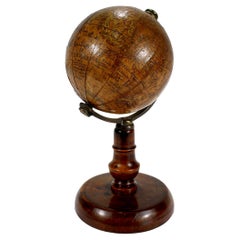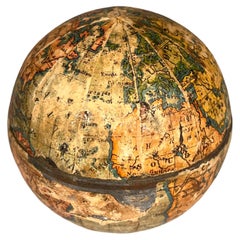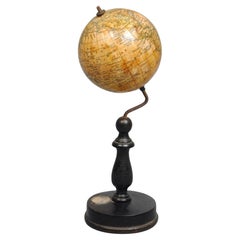Items Similar to 19th Century German Miniature Pocket Terrestrial Globe
Want more images or videos?
Request additional images or videos from the seller
1 of 10
19th Century German Miniature Pocket Terrestrial Globe
$1,230
$2,50050% Off
£920.31
£1,870.5550% Off
€1,068.09
€2,170.9250% Off
CA$1,712.62
CA$3,480.9450% Off
A$1,926.32
A$3,915.2950% Off
CHF 999.14
CHF 2,030.7750% Off
MX$23,367.68
MX$47,495.2950% Off
NOK 12,668.52
NOK 25,749.0250% Off
SEK 11,921.78
SEK 24,231.2750% Off
DKK 7,968.28
DKK 16,195.7050% Off
Shipping
Retrieving quote...The 1stDibs Promise:
Authenticity Guarantee,
Money-Back Guarantee,
24-Hour Cancellation
About the Item
A miniature 19th century 3.5 inch diameter pocket terrestrial globe by C. Abel-Klinger, Nuremberg, Germany, in English for the English speaking markets. Signed with cartouche reading "The Earth published by C. Abel-Klinger in Nuremberg."
Two printed paper gores, continents outlined in color, equator and Grand Meridian delineated in checkered black and red, signed in the southern Indian Ocean.
History of the maker:
Klinger was an art dealer and engraver in Nuremberg, who published globes of various sizes. After his death, the firm was continued by his widow under the name 'J. Klinger's Kunsthandlung.' This name remained in use when Johann Paul Dreykorn (1805-75) bought the firm in 1831. When the merchant Carl Abel joined it in 1852, the name was changed to 'C. Abel Klinger'" (Dekker Globes at Greenwich p 384).
- Creator:C. Abel-Klinger (Maker)
- Dimensions:Height: 3.5 in (8.89 cm)Diameter: 3.5 in (8.89 cm)
- Materials and Techniques:
- Place of Origin:
- Period:
- Date of Manufacture:circa 1880
- Condition:Wear consistent with age and use. Clean, varnished surface.
- Seller Location:Essex, MA
- Reference Number:1stDibs: LU837719193132
About the Seller
5.0
Vetted Professional Seller
Every seller passes strict standards for authenticity and reliability
Established in 1998
1stDibs seller since 2007
192 sales on 1stDibs
- ShippingRetrieving quote...Shipping from: Essex, MA
- Return Policy
Authenticity Guarantee
In the unlikely event there’s an issue with an item’s authenticity, contact us within 1 year for a full refund. DetailsMoney-Back Guarantee
If your item is not as described, is damaged in transit, or does not arrive, contact us within 7 days for a full refund. Details24-Hour Cancellation
You have a 24-hour grace period in which to reconsider your purchase, with no questions asked.Vetted Professional Sellers
Our world-class sellers must adhere to strict standards for service and quality, maintaining the integrity of our listings.Price-Match Guarantee
If you find that a seller listed the same item for a lower price elsewhere, we’ll match it.Trusted Global Delivery
Our best-in-class carrier network provides specialized shipping options worldwide, including custom delivery.More From This Seller
View AllBlack Forest Carved Walnut Hunting Presentation Cup
Located in Essex, MA
A beautifully crafted Black Forest hand carved walnut hunting presentation cup, the basket weave bowl supported by the figure of a gentleman hunter l...
Category
Antique 1870s German Black Forest Decorative Bowls
Materials
Walnut
$880 Sale Price
67% Off
Spectacular 19th Century William IV Rosewood Dining or Center Table
Located in Essex, MA
A fine quality, generously proportioned William IV rosewood center or dining table, the round top showcasing the extraordinary color and figure of the lively wood grain. It is edged ...
Category
Antique 1830s English William IV Dining Room Tables
Materials
Hardwood
$8,500 Sale Price
39% Off
19th C Octagonal Table with Inlaid Marble Top with Brass Shells and Flowers
Located in Essex, MA
A late 19th century Italian or Spanish carved oak octagonal center table, the top with beautifully inlaid specimen marble top decorated with cast brass scallop shells and flower head...
Category
Antique Late 19th Century Italian Baroque Revival Center Tables
Materials
Marble, Brass
$3,600 Sale Price
36% Off
Swiss Silver Covered Tureen by Baltensperger, circa 1920s
By Baltensperger
Located in Essex, MA
A very fine quality handmade Swiss sterling silver covered tureen, of circular form, with hand-hammered cover and base, both of which have decorative ribbing, with oval loop handle o...
Category
Vintage 1920s Swiss Arts and Crafts Sterling Silver
Materials
Sterling Silver
$3,120 Sale Price
20% Off
Hayward Veal Australian Nocturne Cityscape Painting
By Hayward Veal
Located in Essex, MA
An oil on board painting by Australian painter W. Hayward Veal (1913-1968), entitled Nocturne No. 4, depicting a night scene of a park and tree in the foreground with a man walking, ...
Category
Vintage 1940s Australian Mid-Century Modern Paintings
Materials
Pine, Masonite, Wood, Paint
$1,152 Sale Price
41% Off
Herbert Matter Swiss Exhibition Poster on the History of Bathing and Swimming
By Herbert Matter
Located in Essex, MA
A large, original vintage Swiss exhibition poster by celebrated graphic designer, Herbert Matter, for an exhibition at the Museum of Art & Craft in Zu...
Category
Mid-20th Century Swiss Mid-Century Modern Posters
Materials
Paper
$1,400 Sale Price
20% Off
You May Also Like
Antique 19th Century Miniature French Edition Globe by C. Abel-Klinger
By C. Abel-Klinger
Located in Philadelphia, PA
A fine antique French Edition miniature globe.
By C. Abel-Klinger.
On a turned wooden stand with an uncalibrated brass half meridian.
The globe is marked with an integral l...
Category
Antique 19th Century German Neoclassical Maps
Materials
Paper
End XIX century Small Terrestrial Globe Signed C.M.C Paris Papier Maché Sphere
Located in Milan, IT
Small terrestrial globe signed C.M.C. Paris, end of XIX century. Papier maché sphere and turned and ebonized wooden base. Height cm 13 - inches 5.1, diameter of sphere cm 6,5 - inche...
Category
Antique 1890s French Globes
Materials
Paper
Mid 19th Century Inkwell in the Form of a Pocket Globe
Located in London, GB
A fantastic inkwell in the form of a pocket globe, dating from the mid 19th century.
Category
Antique Mid-19th Century English Early Victorian Inkwells
Materials
Pewter
German 4" Miniature Globe On Stand
Located in Lincolnshire, GB
A late 19th century German miniature globe on ebonised stand with a compass set in the base.
Category
Antique Late 19th Century German Globes
Materials
Ebony
A small didactic terrestrial globe by Columbus, Germany 1920.
Located in Milan, IT
On a wooden base worked on the lathe, with a circular foot, wavy profile and high leg, with original patina, there is a small globe, published by Columbus, Berlin. The globe is made ...
Category
Early 20th Century German Globes
Materials
Paste, Wood, Paper
Mid 19th Century Inkwell in the Form of a Pocket Globe
Located in London, GB
A fantastic inkwell in the form of a pocket globe, dating from the mid 19th century.
Category
Antique Mid-19th Century English Early Victorian Inkwells
Materials
Pewter
More Ways To Browse
Antique Scientific Prints
Antique German Furniture Makers
19th Century German Collectibles
Earth Globe
Terrestrial Globes
Nuremberg Brass
Black Globes
Pocket Globe
Antique Pocket Globe
Antique Weighing Scales
Glass Barometer
Antique Organs
Antique Opera Glasses
Wall Barometer
Antique Cardboard Boxes
Antique French Barometer
Antique Hand Planer
Antique Scientific Model
